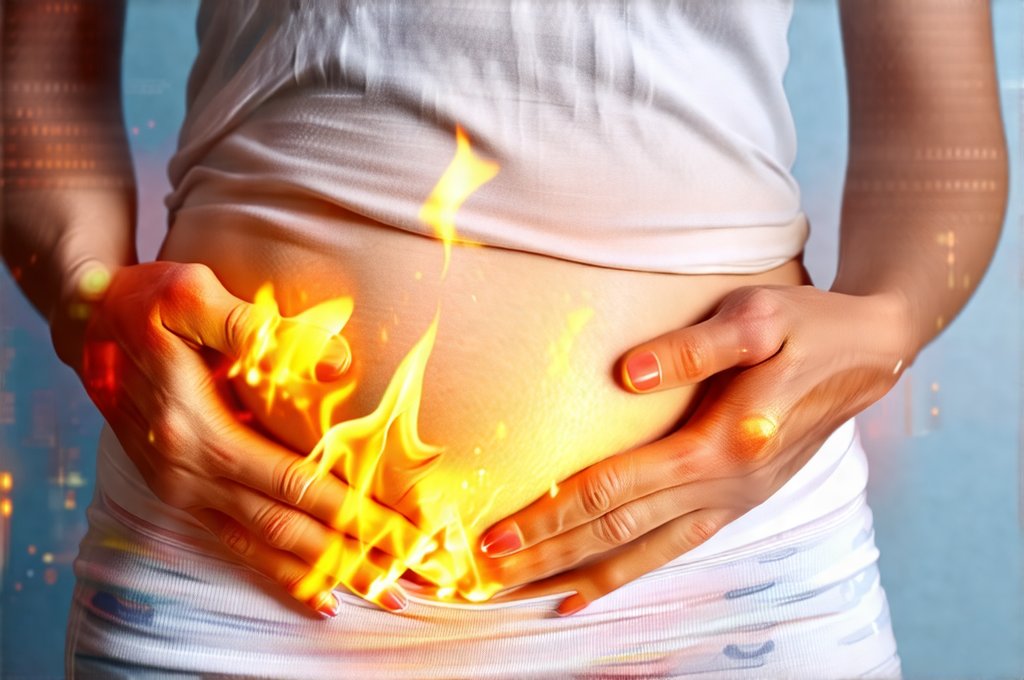Cystitis, commonly understood as a bladder infection, is often associated with painful urination and increased frequency – symptoms many women recognize all too well. However, the experience can be surprisingly complex, extending beyond these typical indicators. It’s not uncommon for individuals experiencing cystitis to also report vaginal burning sensations, leading to confusion and concern about whether the two are directly linked or indicative of a separate issue altogether. The interplay between bladder health and vaginal discomfort is often underestimated, making accurate information crucial for understanding potential causes and seeking appropriate care.
The source of this confusion stems from the close anatomical proximity of the bladder and vagina, as well as their shared nerve pathways. Inflammation in one area can frequently trigger sensations in the other, leading to a blurring of boundaries when it comes to symptom identification. While cystitis itself primarily affects the urinary tract, its symptoms can easily radiate or be misinterpreted as vaginal issues – particularly burning, itching, or discomfort during and after urination. This article will explore this connection, providing clarity on how cystitis can contribute to vaginal burning sensations, differentiating it from other potential causes, and outlining steps for effective diagnosis and management.
The Connection Between Cystitis and Vaginal Burning
The intimate relationship between the urinary tract and the vagina means that inflammation in one area can absolutely influence the other. Cystitis, whether caused by a bacterial infection (most commonly E. coli), irritation from hygiene products or sexual activity, or underlying medical conditions, creates an inflammatory response within the bladder lining. This inflammation doesn’t remain isolated; it sends signals along shared nerve pathways which are perceived as discomfort in both the bladder and the vaginal area. The sensation of burning, therefore, isn’t necessarily originating in the vagina itself, but rather being felt there due to this neurological crossover.
Furthermore, the act of urination itself can exacerbate these sensations. When the inflamed bladder is emptied, the flow of urine can cause irritation and a burning feeling as it passes near the vaginal opening. This is particularly true if there’s any existing sensitivity or inflammation in the vulva (the external female genitalia). The acidic nature of urine can also contribute to this discomfort, especially if the vaginal pH balance has been disrupted. It’s important to remember that even though cystitis is a urinary tract infection, its symptoms can be felt strongly within the vaginal area, making it difficult for some individuals to distinguish between the two. It’s this heightened sensitivity that often makes diagnosis more challenging and requires careful evaluation by a healthcare professional. If you suspect a mild infections cause intense burning, seeking medical advice is crucial.
Finally, recurrent cystitis or chronic bladder issues can lead to hyperalgesia – an increased sensitivity to pain. This means that even mild stimuli, like urination, sexual activity, or tight clothing, can trigger a stronger burning sensation in both the bladder and vaginal region. It’s this heightened sensitivity that often makes diagnosis more challenging and requires careful evaluation by a healthcare professional.
Other Causes of Vaginal Burning – Ruling Out Alternatives
While cystitis can definitely contribute to vaginal burning, it’s crucial to rule out other potential causes before assuming a direct link. Several conditions can mimic the symptoms of cystitis-related vaginal discomfort, making accurate diagnosis essential for effective treatment. These include: – Vaginitis: Inflammation of the vagina, often caused by bacterial vaginosis (BV), yeast infections, or trichomoniasis. – Vulvodynia: Chronic vulvar pain with no identifiable cause. – Allergic reactions or irritations: From hygiene products, soaps, detergents, spermicides, or even certain fabrics. – Sexually transmitted infections (STIs): Such as herpes, chlamydia, or gonorrhea. – Menopause/Postmenopausal changes: Reduced estrogen levels can lead to vaginal dryness and irritation.
A thorough medical evaluation is vital to differentiate between these possibilities. This typically involves a pelvic exam, urine analysis (to check for infection), and potentially swabs to test for STIs or vaginal infections. It’s also important to consider your personal history, including any recent changes in hygiene products, sexual activity, or medication use. Ignoring other potential causes and solely focusing on cystitis can lead to delayed treatment and prolonged discomfort. Remember, self-diagnosis is rarely accurate, and seeking professional medical advice is always the best course of action when experiencing persistent vaginal burning. It’s important to consider if can vaginal infections mimic cystitis symptoms as well.
Identifying Cystitis as the Source
Determining whether your vaginal burning sensation stems from cystitis requires careful consideration of accompanying symptoms and a detailed assessment by a healthcare provider. Beyond the burning itself, look for these key indicators: – Frequent urination: Feeling the urge to urinate often, even when little urine is produced. – Urgent need to urinate: A sudden, strong impulse to empty your bladder immediately. – Painful urination (dysuria): A stinging or burning sensation while urinating. – Cloudy or bloody urine: Indicating potential infection. – Lower abdominal discomfort: A feeling of pressure or pain in the pelvic area.
If these symptoms align with your experience, it’s more likely that cystitis is contributing to your vaginal burning. However, a definitive diagnosis requires further investigation. Your doctor will likely perform a urine test to check for bacteria and white blood cells, confirming the presence of an infection. They may also ask about your medical history, lifestyle factors (such as fluid intake and hygiene practices), and any recent changes that might be contributing to your symptoms. A crucial aspect of identification is often ruling out other causes through appropriate testing and examination.
Treatment Options for Cystitis-Related Vaginal Burning
Once cystitis has been diagnosed as the underlying cause, treatment focuses on addressing the infection or inflammation within the urinary tract. For bacterial cystitis, antibiotics are typically prescribed – the specific type and duration will depend on the severity of the infection and your individual health status. It’s crucial to complete the entire course of antibiotics, even if symptoms improve before finishing, to prevent recurrence and antibiotic resistance. Alongside antibiotics, supportive measures can help alleviate both bladder and vaginal discomfort: – Increase fluid intake: Flushing out the urinary tract helps eliminate bacteria. – Avoid irritants: Limit caffeine, alcohol, spicy foods, and acidic beverages. – Over-the-counter pain relievers: Such as ibuprofen or acetaminophen, can provide temporary relief from pain.
For non-infectious cystitis (caused by irritation), treatment focuses on identifying and eliminating the source of inflammation. This might involve switching hygiene products, modifying sexual practices, or addressing underlying medical conditions. In some cases, your doctor may recommend medications to soothe bladder spasms or reduce inflammation. While treating the cystitis will address the root cause, remember that the vaginal burning sensation may persist for a short time as the inflammation subsides and nerve pathways normalize. If symptoms don’t improve with treatment, or if new concerns arise, consult with your healthcare provider to explore alternative diagnoses and management strategies.
Preventing Future Episodes & Protecting Vaginal Health
Preventing future cystitis episodes can significantly reduce the risk of recurring vaginal burning sensations. Simple lifestyle changes can make a big difference: – Stay hydrated: Drink plenty of water throughout the day. – Practice good hygiene: Wipe from front to back after using the toilet. – Urinate after intercourse: Helps flush out potential bacteria. – Avoid irritating products: Choose gentle, fragrance-free soaps and detergents. – Consider cranberry supplements (with caution): While research is mixed, some studies suggest that cranberry may help prevent UTIs in certain individuals – but consult your doctor before taking any supplements.
Additionally, maintaining good vaginal health can contribute to overall well-being and reduce sensitivity. Avoid douching, as it disrupts the natural pH balance of the vagina. Wear breathable cotton underwear and avoid tight clothing. If you experience recurrent cystitis or vaginal infections, discuss preventative strategies with your healthcare provider. Proactive care is key to minimizing discomfort and maintaining a healthy urinary and reproductive system. It’s also worth considering if can vaginal dryness cause urinary symptoms as part of an overall health plan.





















